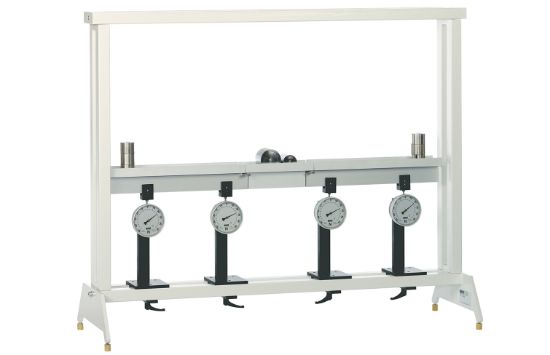Many bridges are executed as Gerber beams. Bridges are subjected to moving loads. Consequently, it is important to take these moving loads into account in the design process. To that end, the so-called lines of influence are determined. Lines of influence describe static reactions to a moving load, such as the internal reactions of the beam or support reactions. The lines of influence are determined by way of method of sections and the conditions of equilibrium, in the same way as the bending moment diagram for a static load for example.
A Gerber beam is an articulated beam, in the case of SE 110.12 with two cantilever beams and a suspended beam between them. Two supports support each cantilever beam. The suspended beam is mounted on articulated supports on each of the cantilever beam arms. As a result the entire beam is statically determinate.
The cantilever beam supports are equipped with force gauges which indicate the support reactions.
Single loads and a moving load are provided to place load on the beam. This means the beam can be subjected to point or distributed loads, or to a moving load. The force gauges indicate the effect of a moving load directly in the support reactions. The supports are movable.
All the component elements of the experiment are clearly laid-out and housed securely in a storage system. The complete experimental setup is arranged in the frame SE 112.

